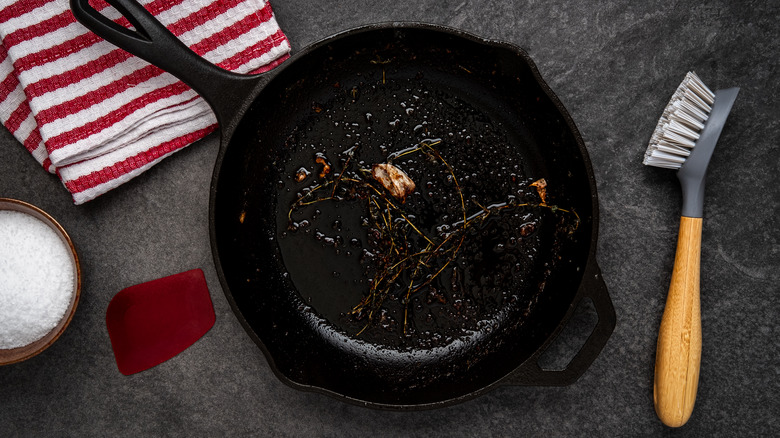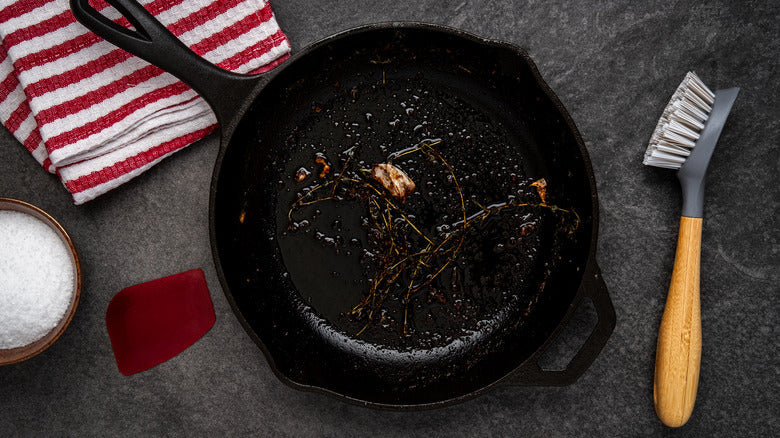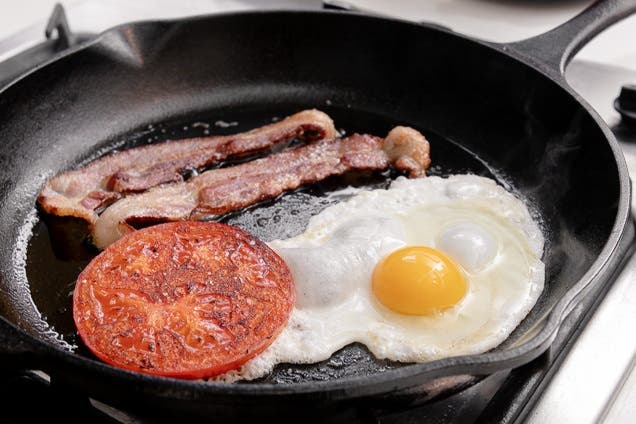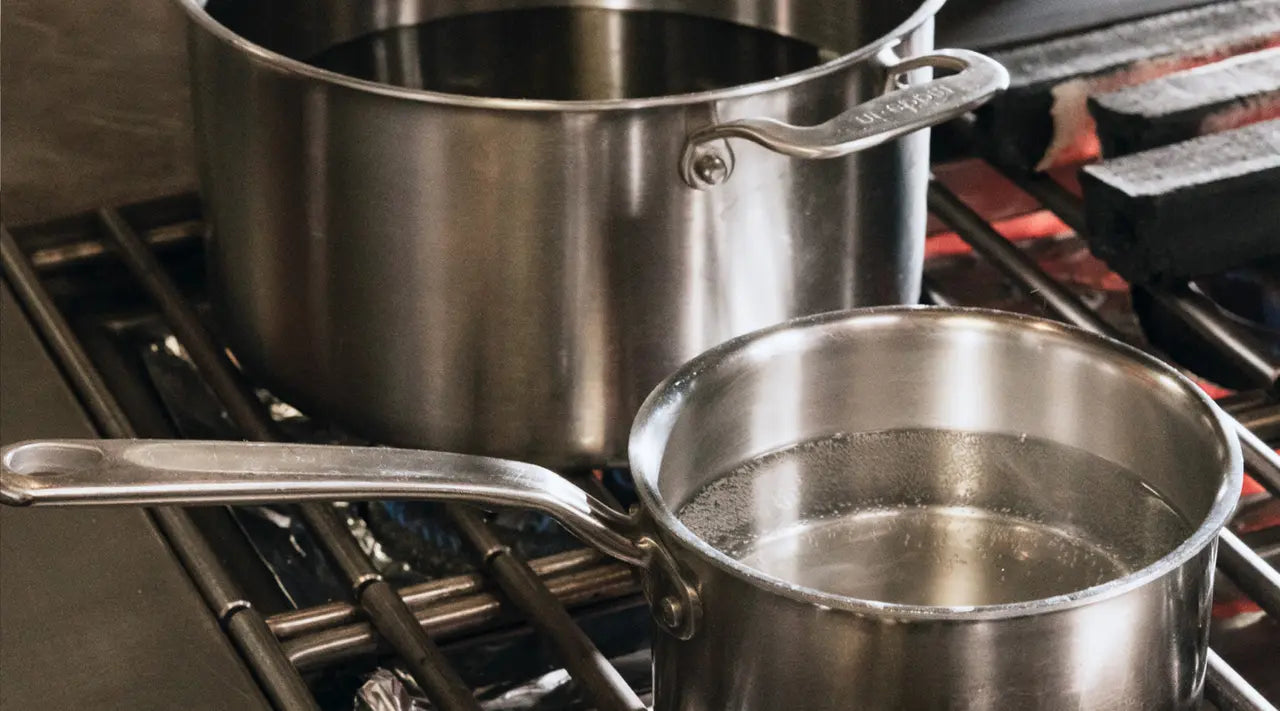Cooking in a cast iron skillet is a highly regarded technique for many professional chefs, especially when it comes to preparing succulent chicken thighs. In this article, we will delve into the intricacies of how to cook chicken thighs in cast iron, ensuring that they are tender, flavorful, and boast a beautiful sear. Whether you're an experienced chef or just looking to refine your skills, this guide will provide you with comprehensive tips and methods.
The mastery of cooking chicken thighs in a cast iron skillet not only showcases your culinary skills but also enhances the flavor profile of the dish. Cast iron skillets distribute heat evenly, allowing for perfect cooking results every time. Get ready to impress your patrons with perfectly cooked chicken thighs!

Understanding Your Chicken Thighs
Before diving into the cooking process, it's essential to understand the different types of chicken thighs available. You can choose between bone-in, skin-on, or boneless, skinless chicken thighs, each offering unique flavors and textures. For the **best results**, we recommend using bone-in, skin-on thighs for maximum flavor and moisture retention.
The Benefits of Using a Cast Iron Skillet
Cooking with a cast iron skillet offers numerous benefits that every kitchen professional should consider:
- Even Heat Distribution: Cast iron skillets retain heat exceptionally well, providing an even cooking surface.
- Natural Non-Stick Surface: When properly seasoned, cast iron develops a non-stick surface that enhances cooking and prevents sticking.
- Versatility: A cast iron skillet can go from stovetop to oven, allowing for multiple cooking methods.
:max_bytes(150000):strip_icc()/super-thin-cast-iron-pan-steaks-FT-BLOG0316-b963522342d1473092f9096ed61caaee.jpg)
Preparing the Chicken Thighs
Preparation is key to achieving the perfect dish. Heres a step-by-step process:
1. Thawing
If your chicken thighs are frozen, ensure they are completely thawed. This helps in cooking them evenly. An easy way to thaw chicken is to place it in the refrigerator overnight.
2. Seasoning
Generously season your chicken thighs with salt, pepper, and any additional spices you enjoy. For a simple marinade, consider mixing olive oil, garlic, and rosemary. The goal is to infuse the thighs with flavor.

Cooking Techniques for Perfect Chicken Thighs
Now that your chicken thighs are prepped, its time to cook! Follow these methods to get perfectly seared and succulent chicken thighs.
1. Preheating the Skillet
To achieve a great sear, preheat your cast iron skillet over medium-high heat. Allow it to become hot before adding oil. This helps to form a crust on the chicken.
2. Adding Oil
Add a tablespoon of oil (like canola or grapeseed) to the skillet once its heated. Swirl the oil around to coat the bottom evenly.
3. Searing the Chicken Thighs
Carefully place the chicken thighs skin-side down in the skillet. Sear them for about 6-8 minutes without moving them. This will create a beautiful golden crust. Flip the thighs once they release easily from the skillet.
4. Baking for Succulence
After searing, transfer the skillet to a preheated oven at 375F (190C). Bake for 20-25 minutes until the internal temperature reaches 165F (74C). This ensures they are cooked through while remaining juicy.

Resting Your Chicken Thighs
Once cooked, allow your chicken thighs to rest for five minutes before serving. This rest period is crucial as it allows the juices to redistribute, resulting in moist and tender meat.
Creative Serving Suggestions
There are endless ways to present your perfectly cooked chicken thighs.
- Serve with a fresh salad to balance the richness of the thighs.
- Pair with roasted vegetables for a colorful, healthy plate.
- Slice and serve over creamy risotto for a comforting dish.
Expert Tips for Success
Here are some tips that experienced chefs recommend for achieving exceptional chicken thighs:
- Always use an instant-read thermometer to ensure proper cooking temperatures.
- Dont overcrowd the skillet; cook in batches if necessary.
- Consider brining your thighs in a saltwater solution for extra tenderness.
Cleaning and Maintaining Your Cast Iron Skillet
Maintaining the health of your cast iron skillet is critical for longevity and performance. After cooking, allow it to cool slightly, then clean it with warm water and a non-metal brush. Avoid soap, as it strips the seasoning.
Why Seasoning is Essential
Regular seasoning builds a non-stick surface, protects against rust, and improves flavor over time. Every few uses, apply a thin layer of vegetable oil to the dry skillet and bake it at a high temperature to maintain its seasoning.
Additional Recipes to Try
If you're interested in exploring more recipes using your cast iron skillet, check out our articles on cooking cornbread and cooking steak for delightful variations!
Conclusion
Cooking chicken thighs in a cast iron skillet is an excellent method for achieving tender, flavorful results. With careful preparation, cooking techniques, and proper skillet maintenance, your culinary efforts will surely impress every time!
Frequently Asked Questions
1. Can I cook chicken thighs skinless in a cast iron skillet?
Yes, cooking skinless chicken thighs is possible, but you may need to adjust seasoning and cooking times for optimal results.
2. What side dishes pair well with chicken thighs?
Consider serving chicken thighs with garlic mashed potatoes, steamed greens, or a vibrant quinoa salad for a complete meal.
3. How do I know when my chicken thighs are done?
Use an instant-read thermometer to check if the internal temperature has reached 165F (74C).
As an Amazon Associate, I earn from qualifying purchases.






Leave a comment
This site is protected by hCaptcha and the hCaptcha Privacy Policy and Terms of Service apply.